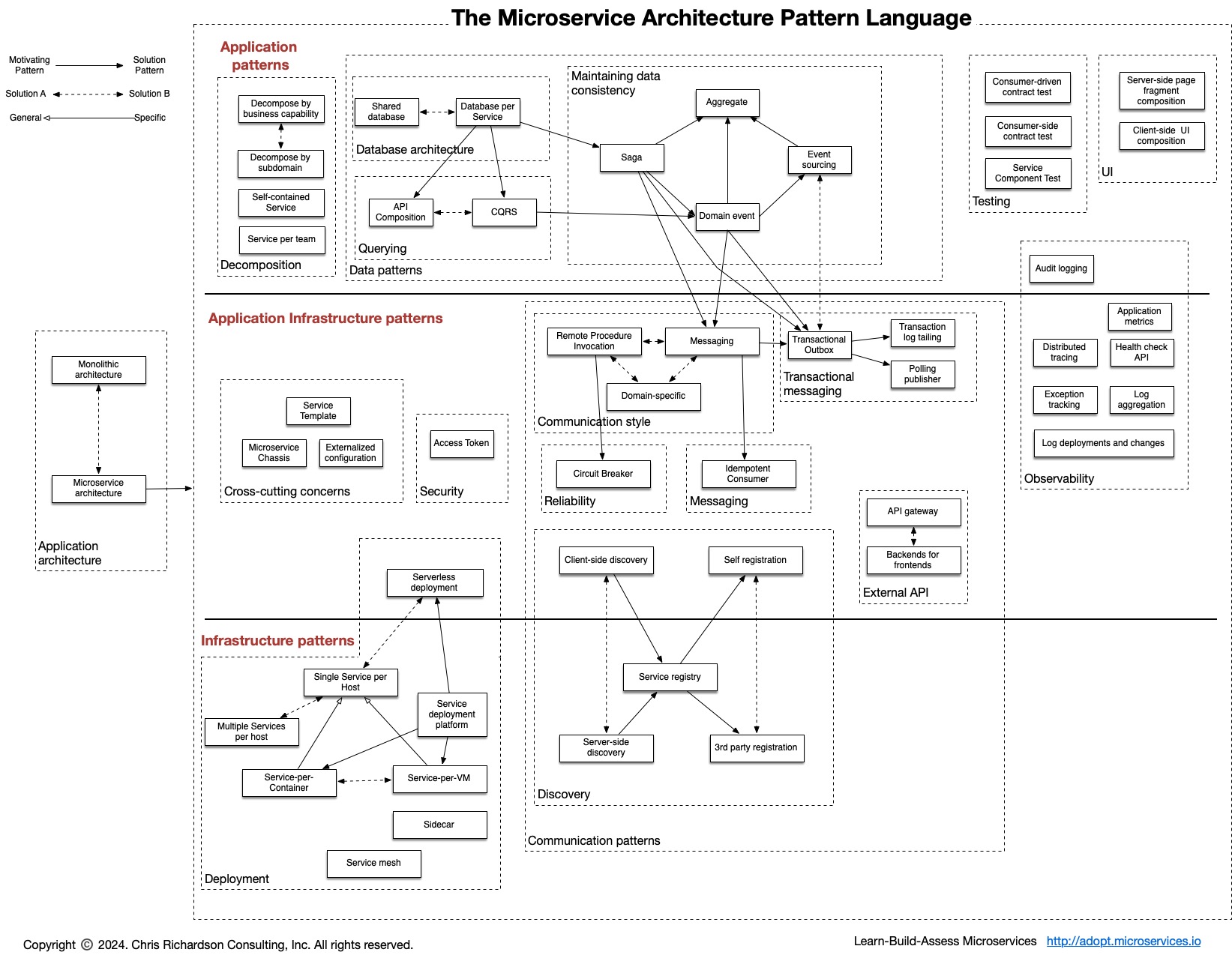Key Points
References
| Reference_description_with_linked_URLs_______________________ | Notes_________________________________________________________________ |
|---|---|
| Ward Cunningham - Portland Pattern Repository | |
| Gang of Four Design Patterns | |
| https://www.tutorialspoint.com/design_pattern/factory_pattern.htm | G4 Pattern summary tutorials point |
| https://springframework.guru/gang-of-four-design-patterns/ | G4 Pattern summary Spring - 1 page |
| JEE Enterprise Services Patterns | |
| Enterprise Integration Patterns | |
| https://microservices.io/patterns/index.html | Microservices Design Patterns |
| https://microservices.io/patterns/monolithic.html | Monolithic Architecture pattern |
| https://microservices.io/patterns/microservices.html | Microservices Architecture pattern |
Key Concepts
G4 Pattern Summary
https://springframework.guru/gang-of-four-design-patterns/
Creational Design Patterns
- Abstract Factory. Allows the creation of objects without specifying their concrete type.
- Builder. Uses to create complex objects.
- Factory Method. Creates objects without specifying the exact class to create.
- Prototype. Creates a new object from an existing object.
- Singleton. Ensures only one instance of an object is created.
Structural Design Patterns
- Adapter. Allows for two incompatible classes to work together by wrapping an interface around one of the existing classes.
- Bridge. Decouples an abstraction so two classes can vary independently.
- Composite. Takes a group of objects into a single object.
- Decorator. Allows for an object’s behavior to be extended dynamically at run time.
- Facade. Provides a simple interface to a more complex underlying object.
- Flyweight. Reduces the cost of complex object models.
- Proxy. Provides a placeholder interface to an underlying object to control access, reduce cost, or reduce complexity.
Behavior Design Patterns
- Chain of Responsibility. Delegates commands to a chain of processing objects.
- Command. Creates objects which encapsulate actions and parameters.
- Interpreter. Implements a specialized language.
- Iterator. Accesses the elements of an object sequentially without exposing its underlying representation.
- Mediator. Allows loose coupling between classes by being the only class that has detailed knowledge of their methods.
- Memento. Provides the ability to restore an object to its previous state.
- Observer. Is a publish/subscribe pattern which allows a number of observer objects to see an event.
- State. Allows an object to alter its behavior when its internal state changes.
- Strategy. Allows one of a family of algorithms to be selected on-the-fly at run-time.
- Template Method. Defines the skeleton of an algorithm as an abstract class, allowing its sub-classes to provide concrete behavior.
- Visitor. Separates an algorithm from an object structure by moving the hierarchy of methods into one object.
Microservices.io Pattern repository
https://microservices.io/patterns/index.html
text starts here
Potential Value Opportunities
Potential Challenges
Candidate Solutions
Step-by-step guide for Example
sample code block
